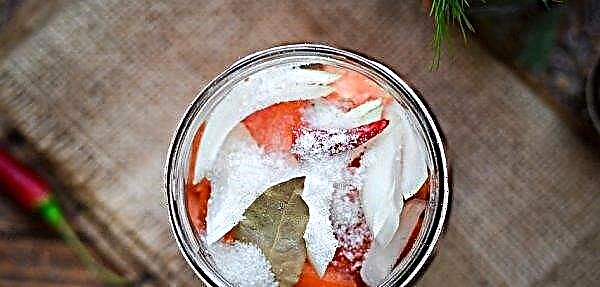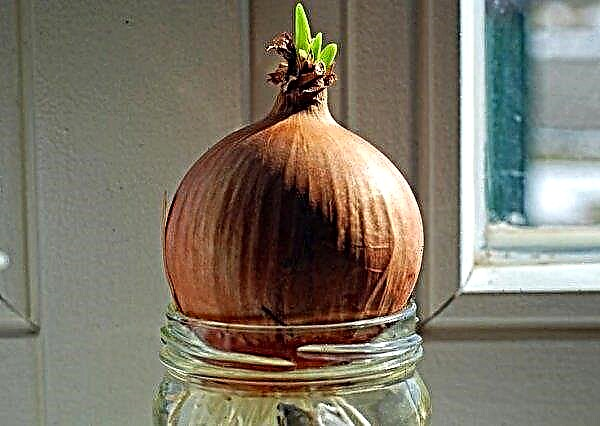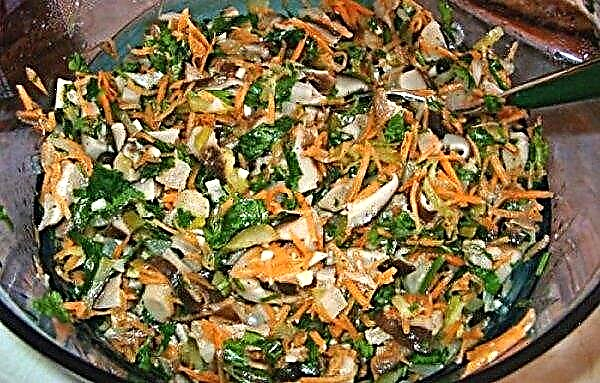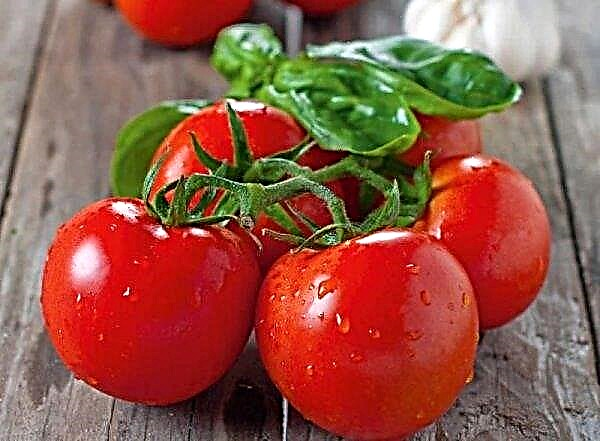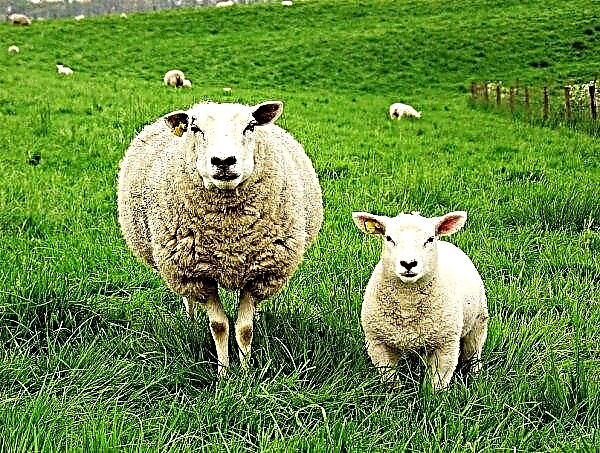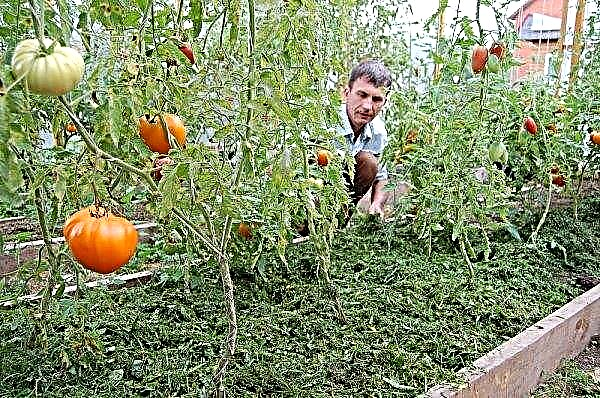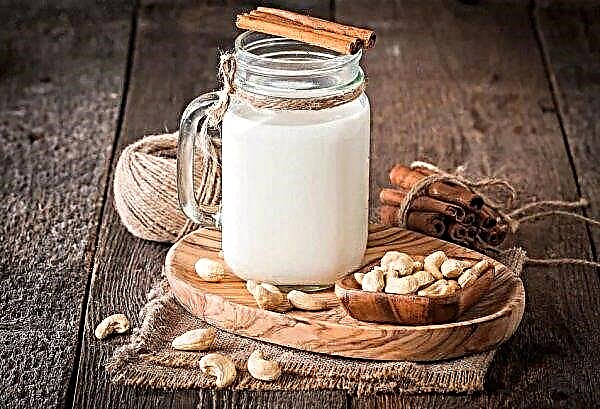Owners of chickens need to worry about the structure of the chicken coop before the onset of winter. If the plans include year-round egg production, then you should know what minimum temperature poultry can tolerate and at what temperature indicators they can lay. This and more will be discussed below.
What temperature do chickens tolerate in winter?
Chickens are unpretentious poultry that can quickly and well adapt to any conditions. In the summer, they can walk on the street from early morning and almost until nightfall, getting their own food. The main conditions to be provided are a clean chicken coop with comfortable perches for sleeping and relaxing, as well as fresh water.
In winter, if chickens are kept for meat or for breeding, you won’t have to worry much about their content either. Another thing is if chickens require good egg laying. Here, without providing special conditions, including living in warm temperatures, you can not do.
Did you know? Layers can lay eggs only in daylight or artificial lighting. If the laying time was at night, the bird will delay the process until morning comes or the light turns on.
In the chicken coop
It is recommended that the temperature in the house does not fall below +15 degrees Celsius. Chickens can tolerate subzero temperatures, but their effects over time adversely affect egg production. Therefore, the maintenance of laying hens in winter becomes impractical, because at this time the amount of required feed increases, the cost of electricity needed for lighting.
Therefore, the maintenance of laying hens in winter becomes impractical, because at this time the amount of required feed increases, the cost of electricity needed for lighting.
At temperatures below 10 degrees below zero frostbite may occur on catkins and ridges. In order to protect them, it is necessary to apply lubrication with petroleum jelly, natural fat.
On a walk
You can let out chickens at temperatures up to minus 10 ° С. The lower the temperature, the shorter the walk. A long walk in the cold does not have the best effect on the level of egg production. It will be enough to release birds no longer than 2 hours a day. In bad, windy, snowy weather, ice, walks can be omitted to avoid injuries and colds of birds.
At what temperature do chickens rush?
In the house of poultry, the temperature should be maintained at the level of +23 ... + 25 degrees Celsius. It is in such conditions that chickens are able to not reduce their productivity. To ensure such a temperature, it will be necessary to warm the room and install artificial sources of heating.
A drop in temperature below +15 ° C leads to a decrease in the level of egg production, below +5 ° C - to its complete stop.
Did you know? Despite the widespread opinion about the small brain size and low mental abilities of chickens, scientists claim that they are able to remember about 100 human faces, navigate in time, recognize the owner and their neighbors in the chicken coop.
How to prepare a chicken coop for winter cold?
The chicken coop or barn, which contains chickens, will need to be prepared for winter - to make it warm, check the ventilation. If not, then it will need to be equipped. Also, before starting the chickens for the winter, they will need to disinfect the premises with two kilograms of lime, diluted in ten liters of water.
Warming
The type of material from which the chicken coop is made will affect the choice of insulation. If the walls and roof are wooden, then foam insulation, polystyrene, mineral, basalt wool, slabs are suitable for insulation.
During the construction of a bird house “from scratch”, foam or sawdust is most often used for insulation. One economical option is foil penofol. It is important to remember that any insulation inside should be well mounted so that the birds do not have access to it, cannot bite, and thus pose a threat to their health and life. On the floor there should be a litter with a layer of at least 15 cm. Chickens use peat and sawdust as bedding material. They can be mixed with straw.
It is important to remember that any insulation inside should be well mounted so that the birds do not have access to it, cannot bite, and thus pose a threat to their health and life. On the floor there should be a litter with a layer of at least 15 cm. Chickens use peat and sawdust as bedding material. They can be mixed with straw.
Important! One of the most economical options for heating a chicken coop is to install infrared lamps, since they perform several functions. In addition to heating chickens and perches, they illuminate the room and reduce aggression in birds. One 250 W lamp can heat an area of 12 square meters. m
Insulation of walls and roofs is a good and low-cost way to maintain heat in the chicken coop, which is suitable for regions with a temperate climate. But in severe winters, artificial heating is required - using heating devices. To maintain positive temperatures, electric heaters are used, gas, stove, water heating, infrared radiation from lamps and heaters. The choice of heating system will depend on the area of the house and the number of heads kept. Heaters must be installed in such a way that the chickens do not have access to them. The most practical way is to place it in a wooden box with holes.
Ventilation
Ventilation in the chicken house performs several functions:
- fresh air intake;
- removal of harmful fumes that emit bird excrement;
- maintaining optimal temperature;
- normalization of air humidity.
- Natural. Ventilation can occur with the help of small windows or windows. In this case, you will need to ventilate the house daily. But in cold weather, this option is fraught with the fact that in the chicken coop there will be a sharp temperature drop, drafts will appear, and this is fraught with the development of diseases and, possibly, frostbite.
- Supply and exhaust. This ventilation option should be resorted to when more than 20 goals are contained in the chicken coop. This is the most optimal and not expensive type, which must be equipped at the stage of construction of the house. Such ventilation can be primitive and suitable for small areas and more solid, which is created according to the project and used in large rooms.
- Mechanical Most often used in industrial production. For small farms, it is not suitable, since it requires considerable costs to pay for the electricity necessary for the operation of the fans.

Proper nutrition of chickens in winter
A huge effect on the level of egg production is provided by the nutrition of chickens. Care must be taken to ensure that the daily laying menu consists of the following ingredients:
- cereals (wheat, barley, oats, corn);
- root vegetables, tubers, vegetables (potatoes, carrots, beets, cabbage, pumpkins);
- green grassy plants (nettle, dandelion, alfalfa, clover);
- micro and macro elements (calcium, phosphorus, sodium, chlorine);
- vitamin supplements containing vitamins A, group B, D, K, E.
 In winter, when it is not possible to ensure the supply of all the required vitamins and minerals with ordinary food alone, it is necessary to add compound feed and premixes, for example, such as:
In winter, when it is not possible to ensure the supply of all the required vitamins and minerals with ordinary food alone, it is necessary to add compound feed and premixes, for example, such as:- Rex vital;
- "Ryabushka";
- "Chicken pock";
- Zdravur.
Experts advise compiling a winter menu of rushing chicken, adhering to the following recommendations for content:
- cereals - 120 g;
- moistened mash - 30 g;
- boiled potatoes - 100 g;
- oilcake - 7 g;
- chalk - 3 g;
- salt - 0.5 g;
- bone meal - 2 g;
- yeast - 1 g.
Feeding is carried out 3 times a day. Bird breakfast should consist of grain and boiled potatoes, bran, shell, salt. Lunch - from the mash, vegetables, herbs. Dinner - from the grain. In order for the chicken to eat normally, the menu must be changed periodically, otherwise it will get tired of it, and the bird will lose its appetite. In drinking bowls must be present fresh clean water. In winter, its temperature should not fall below +15 ° C, otherwise the birds may get sick.
In order for the chicken to eat normally, the menu must be changed periodically, otherwise it will get tired of it, and the bird will lose its appetite. In drinking bowls must be present fresh clean water. In winter, its temperature should not fall below +15 ° C, otherwise the birds may get sick.
Violations in the gastrointestinal tract of chicken and a drop in egg production can be obtained by feeding the bird:
- salt and salty foods in large quantities;
- immature vegetables;
- potatoes turned green from a long exposure to the sun;
- onions;
- legumes in dry or undercooked form;
- dry rice
- apple seeds;
- raw eggs.
Important! When the potato is exposed to sunlight for a long time, it produces the substance solanine, which is toxic for farm animals and birds. Such tubers are prohibited for feeding, as they can lead to serious poisoning, up to death.
Factors Affecting Chicken Egg Production in Winter
The performance of laying hens in the winter is influenced by several factors:
- Breed. Stable and high egg laying show chickens belonging to the breeds of the egg direction, for example, Highsex and Broken Brown, Leghorn, Isa Brown, and High-Line.
- Conditions in which birds are kept, - moderate heat, light and cleanliness, the absence of drafts and sharp temperature fluctuations.
- Age. Most of the eggs are brought by young laying hens in the first year of egg laying.
- Well-being. Only healthy individuals are highly productive.
 Summing up, it can be argued that hens, in principle, can withstand low temperatures without harm to life and health. However, the stable “minus” in the chicken coop inevitably leads to the fact that the birds stop rushing. Those poultry farmers who plan to receive eggs stably in the winter should take care of installing ventilation, heating, warming the house and harvesting vitamins rich in vitamins.
Summing up, it can be argued that hens, in principle, can withstand low temperatures without harm to life and health. However, the stable “minus” in the chicken coop inevitably leads to the fact that the birds stop rushing. Those poultry farmers who plan to receive eggs stably in the winter should take care of installing ventilation, heating, warming the house and harvesting vitamins rich in vitamins.


